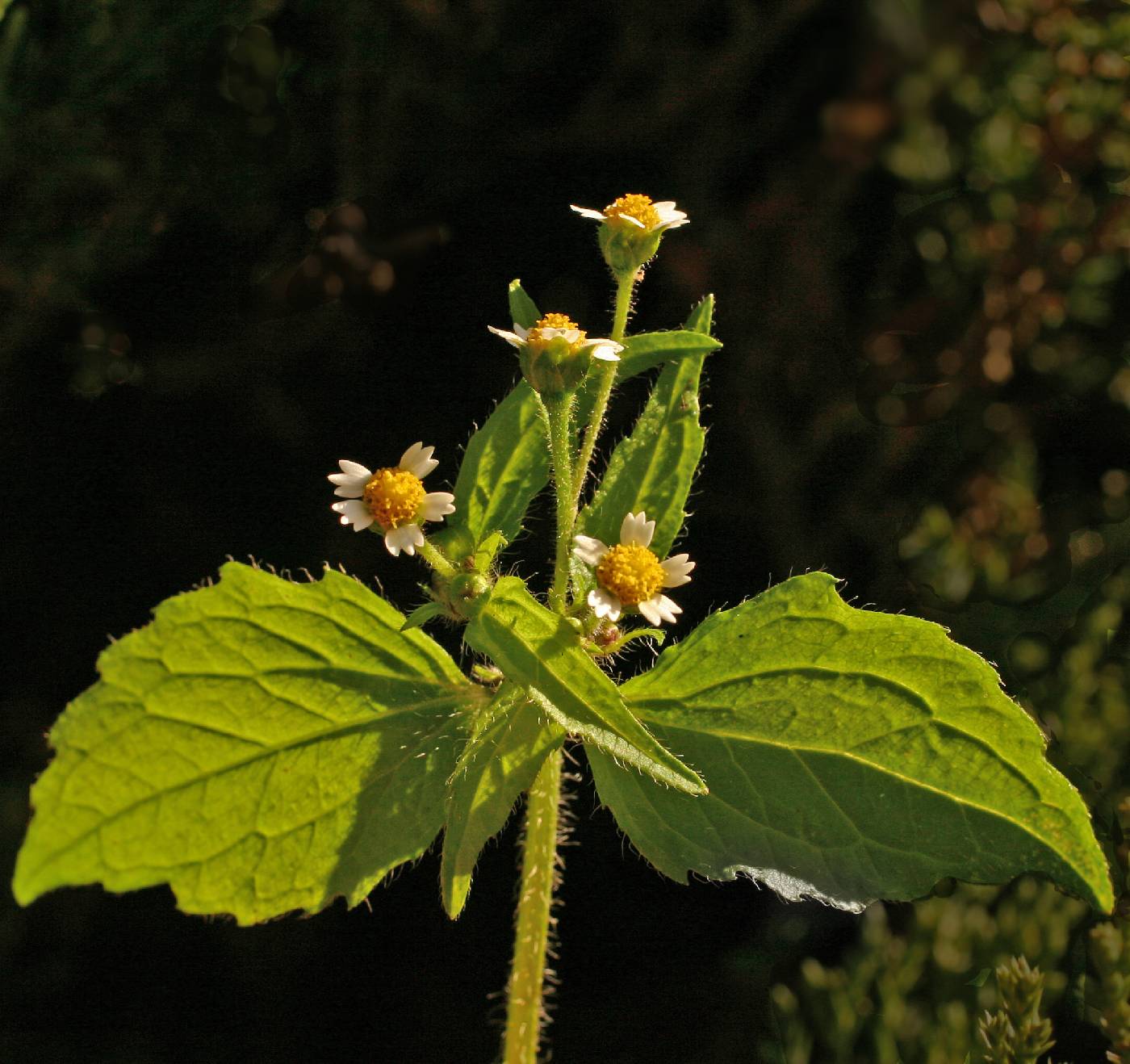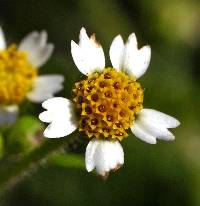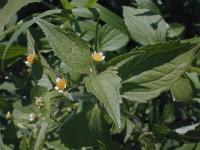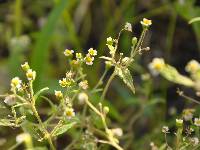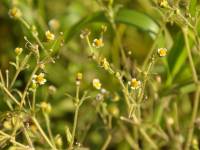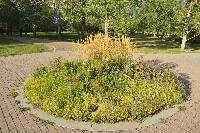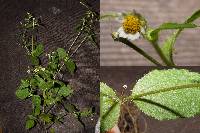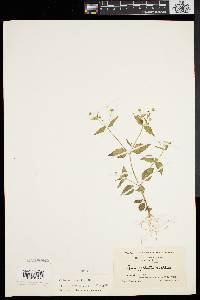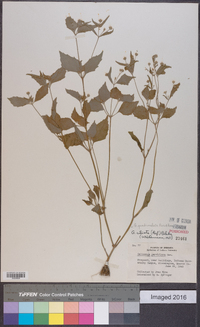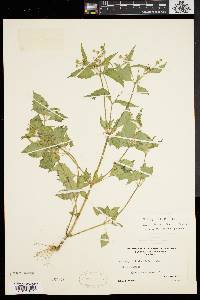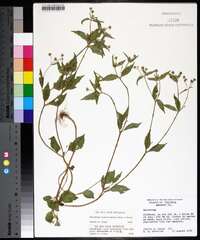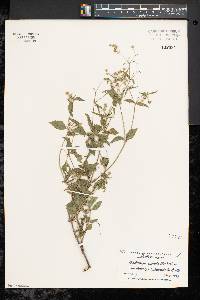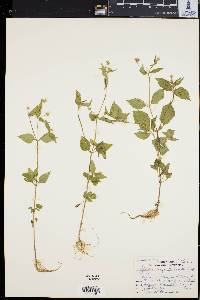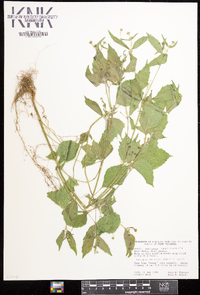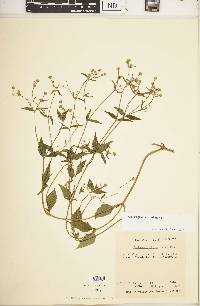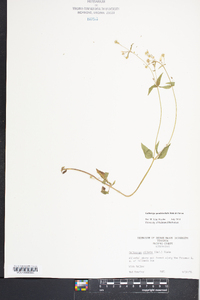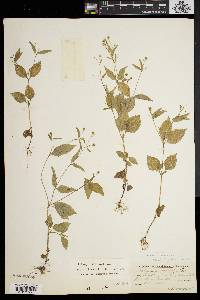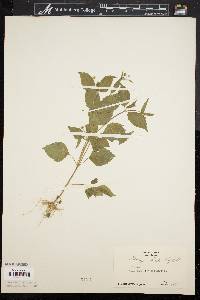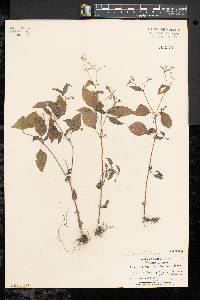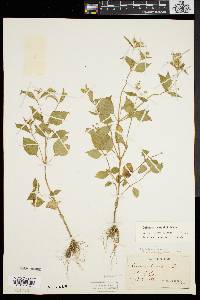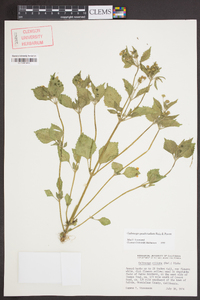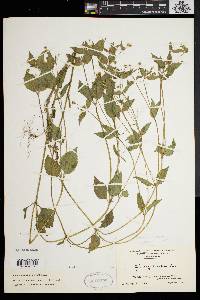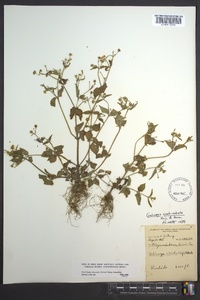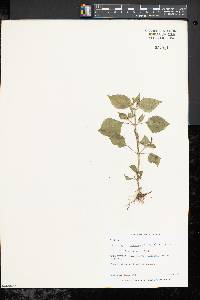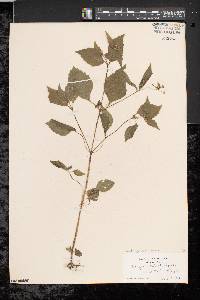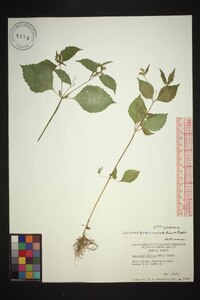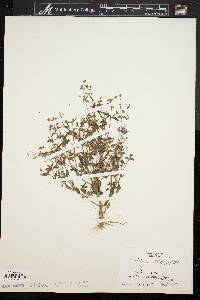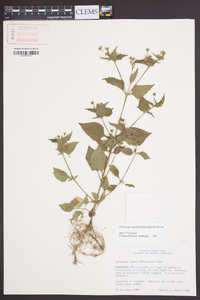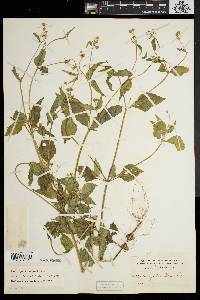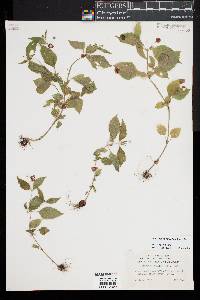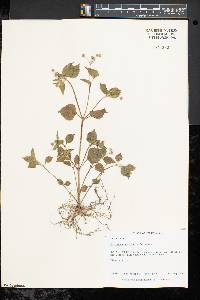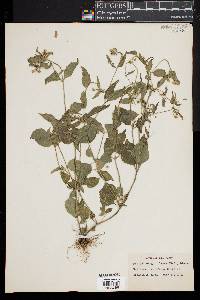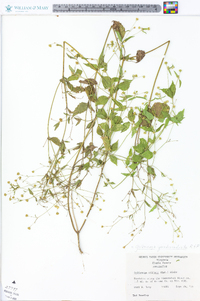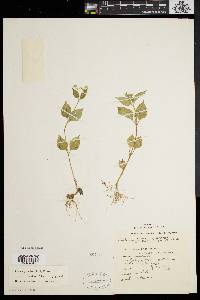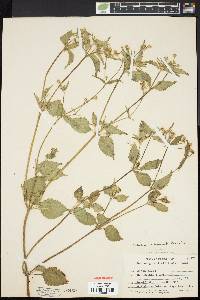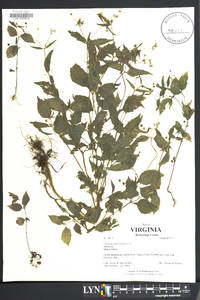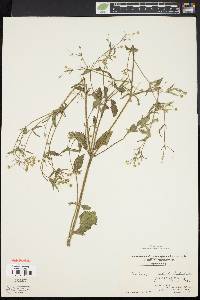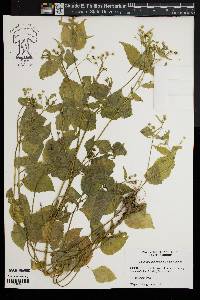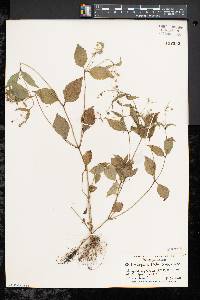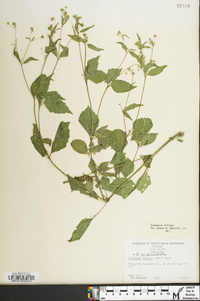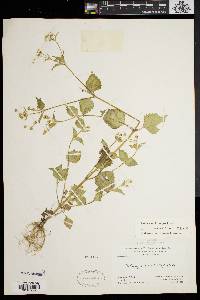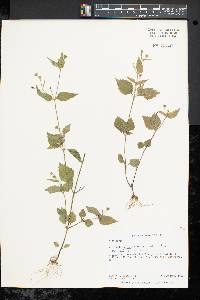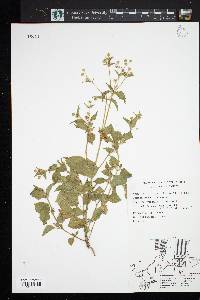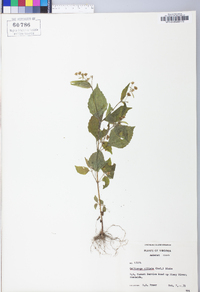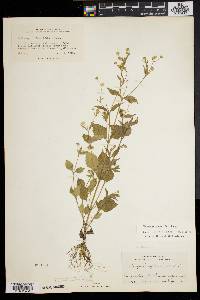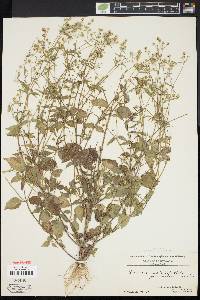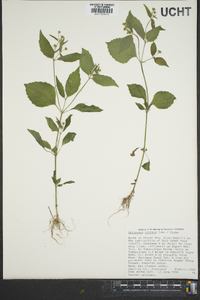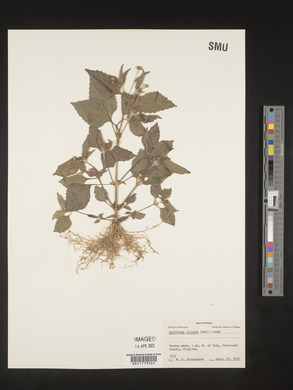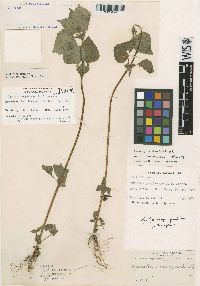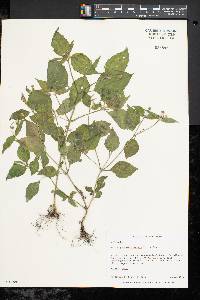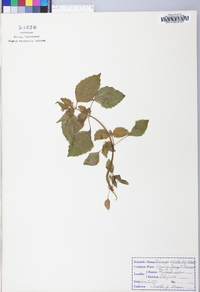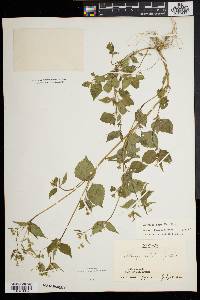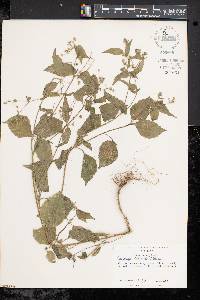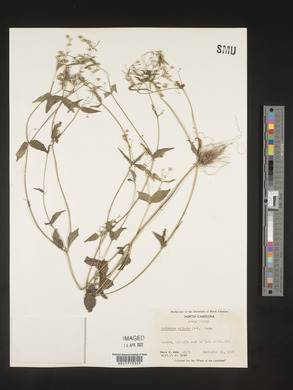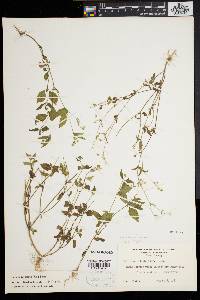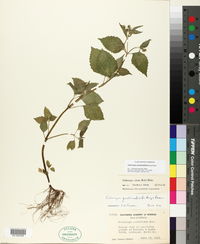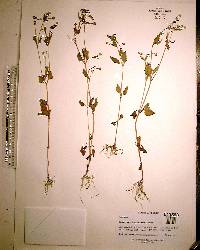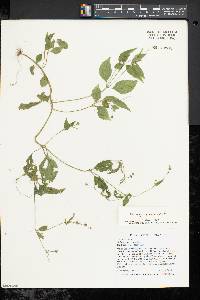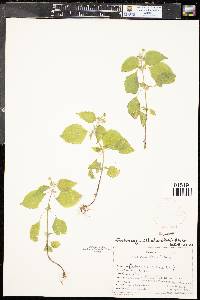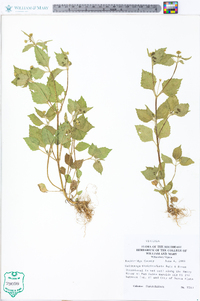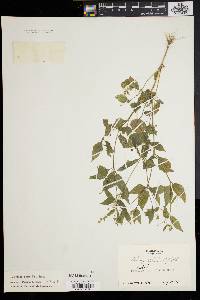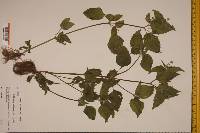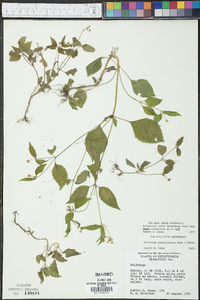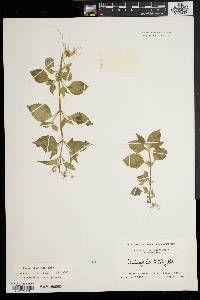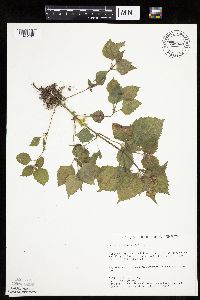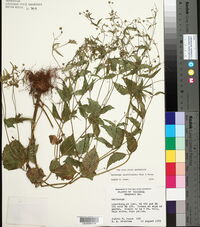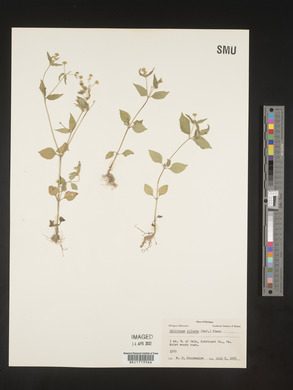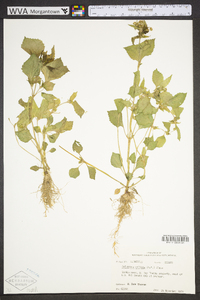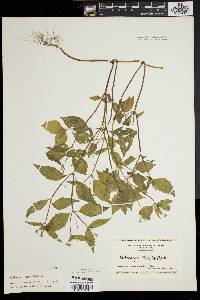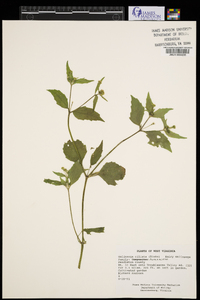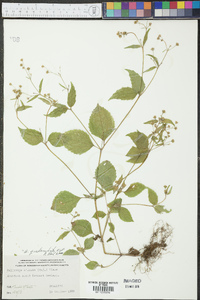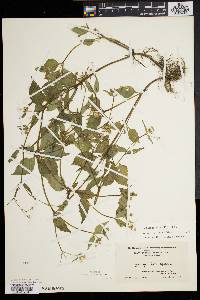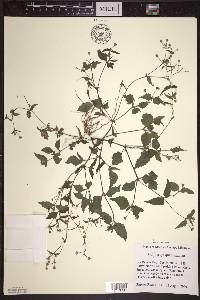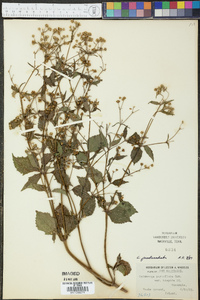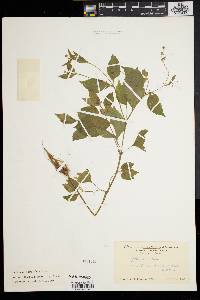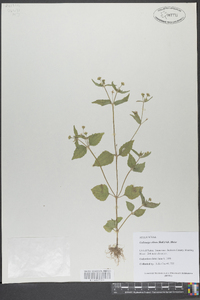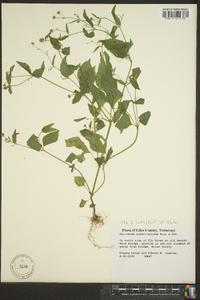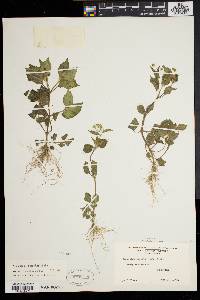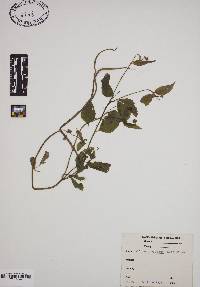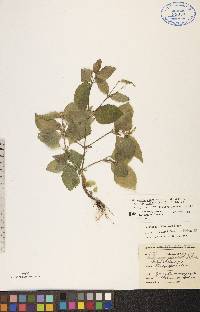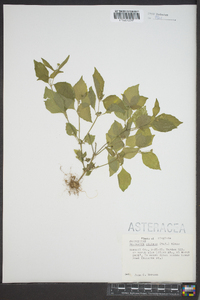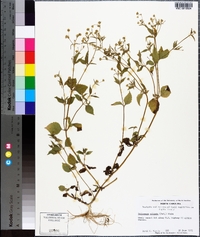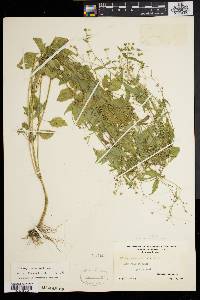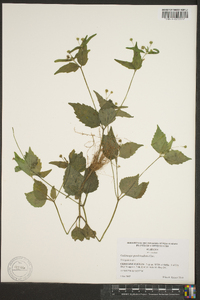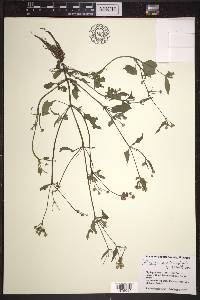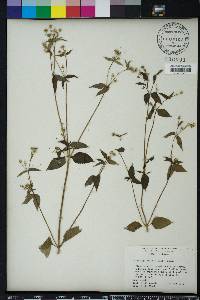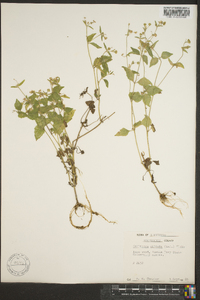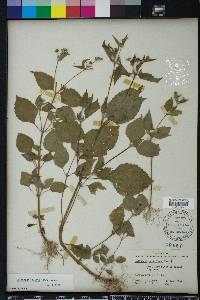
|
|
|
|
Family: Asteraceae
Shaggy-Soldier, more...shaggy soldier, fringed quickweed, hairy galinsoga
[Adventina ciliata Raf., moreGalinsoga aristulata E.P.Bickn., Galinsoga bicolorata H.St.John & D.White, Galinsoga brachystephana Regel, Galinsoga caracasana Sch.Bip., Galinsoga ciliata S.F.Blake, Galinsoga parviflora var. hispida , Sabazia urticifolia (Kunth) DC., Wiborgia urticifolia Kunth] |
Plants 8-62 cm. Leaf blades 20-60 × 15-45 mm. Peduncles 5-20 mm. Involucres hemispheric to campanulate, 3-6 mm diam. Phyllaries falling. Paleae: outer falling, broadly elliptic to obovate, 2-3 mm; inner falling, linear to lanceolate, 2-3 mm, entire or 2- or 3-lobed, lobes to 1/3 total lengths, blunt. Ray florets (4-)5(-8); corollas usually white, sometimes pink, laminae 0.9-2.5 × 0.9-2 mm. Disc florets 15-35. Cypselae: rays 1.5-2 mm; discs 1.3-1.8 mm; pappi: rays of 6-15 fimbriate scales 0.5-1 mm; discs 0, or of usually 14-20, rarely 1-5, white, lanceolate to oblanceolate, fimbriate, sometimes aristate, scales 0.2-1.7 mm. 2n = 32 [48, 64]. Flowering and fruiting summer-fall. Disturbed soils, fields, orchards, gardens, lawns, roadsides; 0-2500 m; introduced; Alta., B.C., Man., N.B., N.S., Ont., P.E.I., Que., Sask.; Ala., Ark., Colo., Conn., Del., D.C., Fla., Ga., Ill., Ind., Iowa, Kans., Ky., Maine, Md., Mass., Mich., Minn., Mo., Nebr., N.H., N.J., N.Y., N.C., N.Dak., Ohio, Pa., R.I., S.C., Tenn., Vt., Va., Wash., W.Va., Wis.; Mexico; West Indies; Central America; South America; introduced in Europe; Asia; Africa; Pacific Islands. Tetraploids of Galinsoga quadriradiata are native to Mexico. Higher polyploids are found in South America and differ from the tetraploids by their coarsely crenate-serrate leaves, cylindro-campanulate involucres, and usually reddish purple limbs of ray corollas that extend at right angles to involucres.
Freely branching, somewhat hairy, 2-7 dm, the hairs of the stem generally fairly coarse and spreading; lvs petiolate, with ovate (often broadly so), rather coarsely toothed blade 2.5-7 נ1.5-5 cm; heads mostly rather numerous (in well developed plants) in open, leafy cymes, slender-pedunculate, the peduncles and often also the invols spreading-villous, with gland-tipped hairs; outer invol bracts 1-2, herbaceous, deciduous, the inner 3-4 mm, deciduous with their attached receptacular bracts; rays (3-)5(6), white (pink), strongly 3-toothed, 2-3 mm, nearly as wide; inner receptacular bracts mostly entire; disk 3-6 mm wide; achenes black, hispidulous with appressed or ascending hairs; pappus of the disk of slender, fimbriate scales tapering to a short but definite awn-tip, often shorter than the cor, that of the rays of short but well developed fimbriate scales, about equaling the tube; 2n=32, 48, 64. Native of C. and S. Amer., now a cosmopolitan weed. June-Nov. (G. bicolorata and G. caracasana, with pink rays; G. ciliata) Gleason, Henry A. & Cronquist, Arthur J. 1991. Manual of vascular plants of northeastern United States and adjacent Canada. lxxv + 910 pp. ©The New York Botanical Garden. All rights reserved. Used by permission. From Flora of Indiana (1940) by Charles C. Deam This pernicious weed was first reported in 1911 from Putnam and Ripley Counties. Since that time it has been discovered in several other counties. It is probably found in cultivated fields in every county along the Ohio River. I found it to be a common weed in the park and adjacent lots in Rushville, Rush County, in 1925. This weed will, no doubt, eventually become a pest in all parts of the state. ...... Indiana Coefficient of Conservatism: C = null, non-native Wetland Indicator Status: FACU |
|
|
|
This project was made possible in part by the Institute of Museum and Library Services [MG-70-19-0057-19].
Powered by Symbiota

